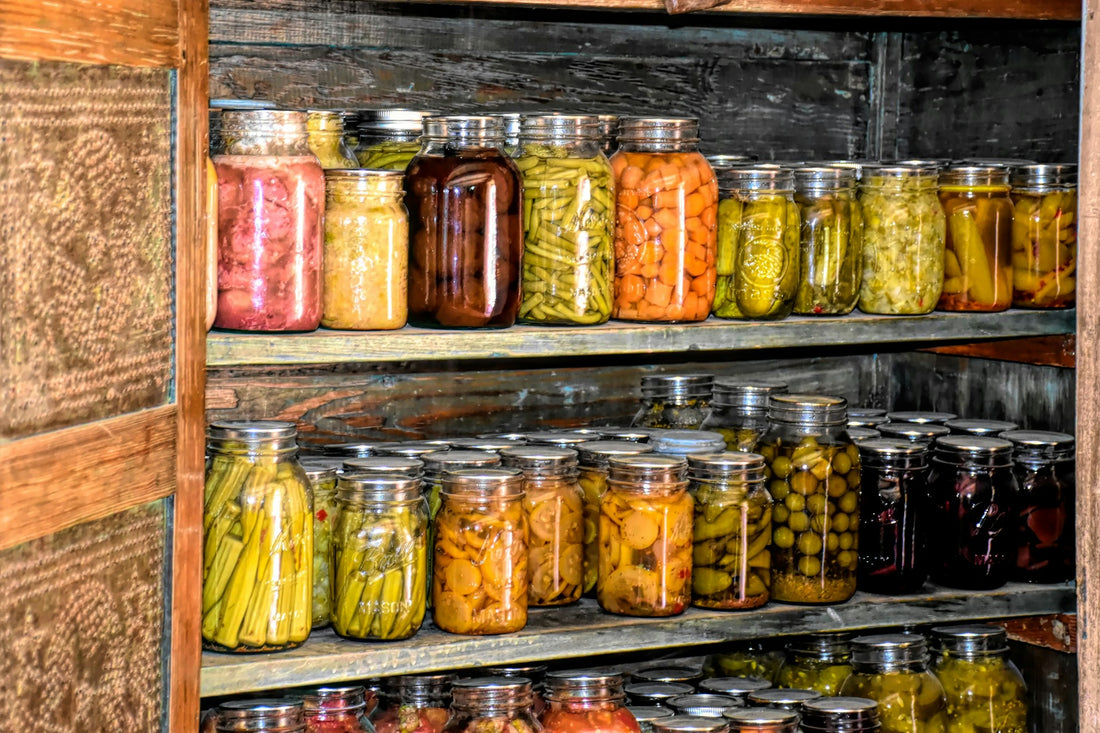The average home gardener loses up to 40% of their harvest due to improper storage. That's nearly half of your hard work literally going to waste. We spend countless hours tending to our gardens, watching our vegetables grow from tiny seeds to beautiful, fresh produce. However, the real challenge begins after harvest.
Many gardeners find themselves overwhelmed during peak season and watch their precious vegetables spoil before they can be used. Whether you're dealing with a bumper crop of tomatoes or trying to preserve your root vegetables for winter, we'll walk you through everything you need to know about preserving your garden's bounty.
Preventing Early Spoilage
The first step in learning how to store garden vegetables is harvesting. Harvesting is pretty simple, but it does make a difference when you do it and how you treat the vegetables. Timing is everything when it comes to preserving our garden's bounty.
The quality of our vegetables is at its peak early in the morning. Harvest after the morning dew has dried but while temperatures are still cool. When removing vegetables from plants, we use clean, sharp tools to prevent damaging the parent plant.
- Clean pruners with rubbing alcohol before harvesting
- Handle produce gently to avoid bruising
- Use scissors or pruners for tough stems
- Transport harvested vegetables immediately to a cool location
Proper cleaning also significantly impacts storage life. Wait to wash vegetables until right before use, since premature washing can promote bacterial growth and accelerate spoilage. For vegetables that require immediate cleaning, use cool running water and avoid soaking them.
Sorting vegetables is crucial for successful storage. Separate any damaged produce since rotting vegetables can spread disease to other stored items. Additionally, ensure proper ventilation by avoiding unperforated plastic bags, which can create excess humidity and lead to mold growth.
Different vegetables need different storage conditions, and temperatures significantly impact shelf life. In fact, for every 10°F increase in temperature above ideal conditions, you can expect up to a 25% reduction in storage life.
Managing Moisture Problems
Moisture control stands as one of the most crucial challenges in vegetable storage. Maintaining proper humidity levels can make the difference between fresh, crisp produce and a spoiled harvest.
Generally, high relative humidity (85-95%) helps most fresh fruits and vegetables stay fresh. But, you need to prevent unwanted condensation, which can lead to faster disease development. Here's the process for managing condensation:
- Keep surfaces dry and clean to prevent water accumulation
- Monitor air flow patterns in storage areas
- Maintain storage temperature within 2°F of the refrigeration coil temperature
- Use paper towels in storage drawers to absorb excess moisture
Leafy greens thrive in higher humidity conditions, but root vegetables prefer slightly drier environments. To protect the harvest, store fruits separately from other produce. This separation prevents premature spoilage, as some fruits release ethylene gas that can affect nearby vegetables.
Rather than dealing with mold after it appears, focus on prevention. Paper bags allow moisture to escape, reducing mold formation risk. Plastic containers with proper ventilation (holes) help maintain optimal humidity while preventing excess moisture buildup.
For long-term storage, use these packaging options:
- Breathable produce bags that allow air circulation
- Plastic containers with ventilation holes
- Paper bags for moisture-sensitive vegetables
- Waxed cardboard boxes for root vegetables
Poor ventilation can quickly render an entire crop unsuitable for consumption. Always ensure proper air circulation in your storage areas.
Extending Storage Life
Ethylene management plays a vital role in vegetable storage, too. Some crops produce high levels of ethylene, which can compromise quality and reduce shelf life. These include onions, tomatoes, apples, bananas, avocados, melons, such as cantaloupe, stone fruit, pears, kiwi, and mangoes.
Keep these ethylene-sensitive items separate from ethylene producers:
- Leafy greens
- Carrots and root vegetables
- Cucumbers
- Potatoes
Maximizing Storage Space
Smart organization can double or even triple your storage capacity without requiring additional room. Try utilizing vertical space as much as possible.To keep vegetables organized and easy to reach, install shelves and wall-mounted storage. For example, use hanging racks that are 12 inches deep. This provides enough space for produce while ensuring good air circulation.
Inventory Tracking Systems
To maintain freshness, use a First-In-First-Out (FIFO) system. Here's how to manage the inventory:
- Label all stored items with storage dates
- Place older items in front or on top for easy access
- Store similar vegetables together on shelves
- Update inventory records regularly
- Check expiration dates monthly
Long Term Storage Options
Canning
Canning is a simple way to preserve vegetables and make them last longer. Vegetables are sealed in airtight containers and heated to a certain temperature. This kills harmful germs and stops enzymes that cause food spoiling.
The high heat used in canning destroys bacteria, yeasts, and molds that would otherwise cause the vegetables to rot. It also inactivates enzymes that can lead to changes in color, texture, and flavor over time. By creating a vacuum seal, canning prevents new microorganisms from entering the container and contaminating the food.
Canned vegetables can be stored at room temperature for extended periods, often up to a year or more, without losing their nutritional value or quality. This allows you to enjoy the taste of fresh vegetables long after the growing season has ended.
Freezing
Freezing preserves vegetables by slowing down how quickly they spoil. When you freeze vegetables, the water inside their cells turns into ice crystals. This stops harmful microorganisms from growing and slows down the enzymes that make food go bad. Frozen vegetables can maintain their nutritional content, flavor, and texture for much longer periods compared to fresh vegetables stored at room temperature or in the refrigerator.
The freezing process also helps to lock in the nutrients present in vegetables at the time of freezing. Vegetables frozen at their peak ripeness are often more nutritious than their fresh counterparts that may have spent days or weeks in transit or on store shelves.
The effectiveness of freezing as a preservation method depends on proper preparation and storage. To keep frozen vegetables fresh, first blanch them. Then, store them at 0°F (-18°C) or lower. Use the right packaging for storage.
Dehydration
Dehydrating vegetables is a great way to preserve them. This method removes moisture, which helps vegetables last much longer.
Dehydration works by removing water from vegetables. This reduction in moisture makes it hard for harmful microorganisms, like bacteria, yeasts, and molds, to grow. Since these microorganisms need moisture to thrive, dehydration significantly slows down spoilage.
Some nutrients may be lost during dehydration, but many vitamins and minerals stay intact. Removing water concentrates these nutrients, often making dried vegetables very nutritious. This means that even small amounts of dehydrated vegetables can provide a lot of nutritional value.
Dehydration makes vegetables shrink a lot, which reduces their weight and volume. This allows for more efficient storage, so you can keep a larger amount of preserved vegetables in a smaller space. This is especially helpful for those with limited storage or for planning long-term food storage.



